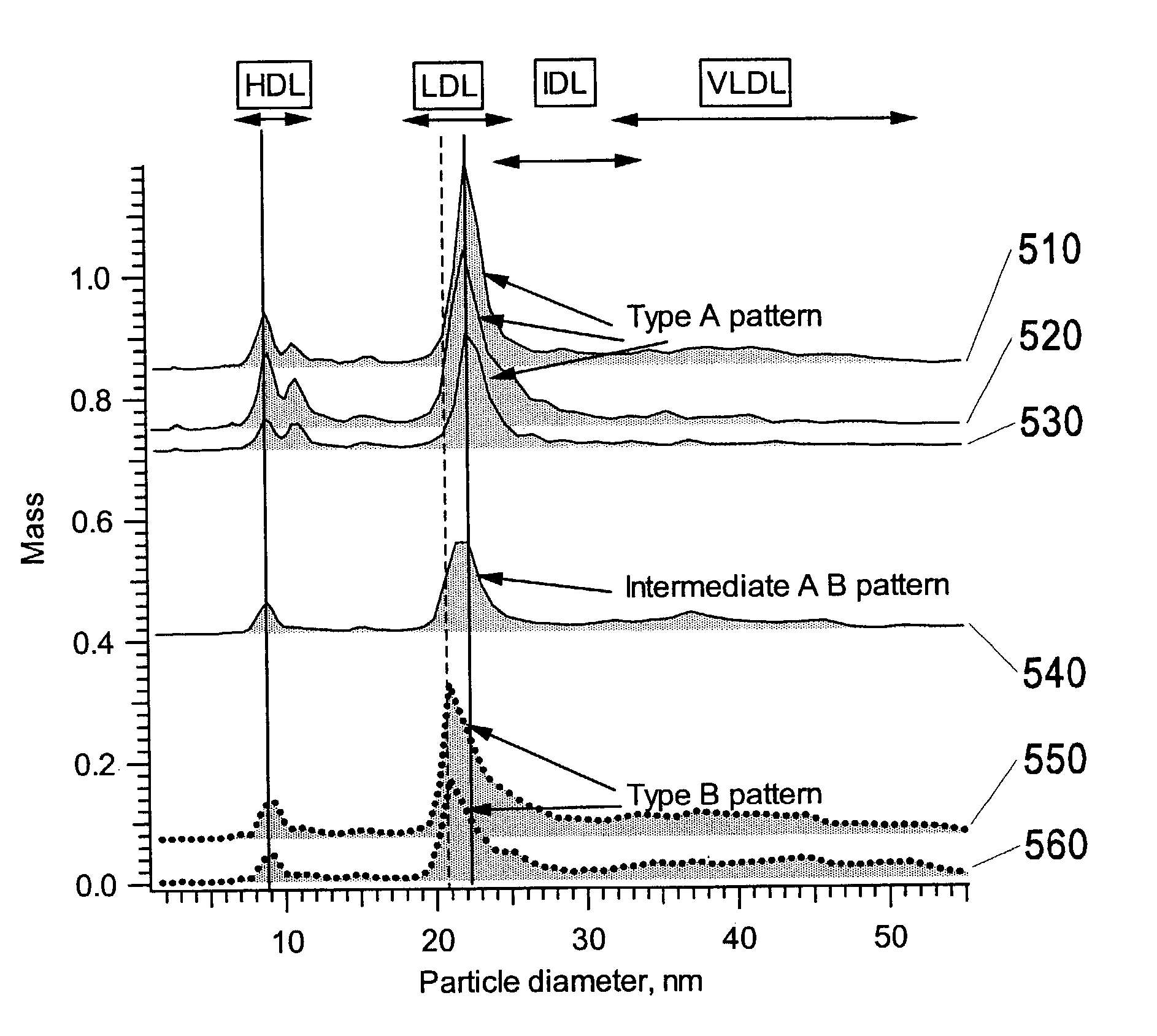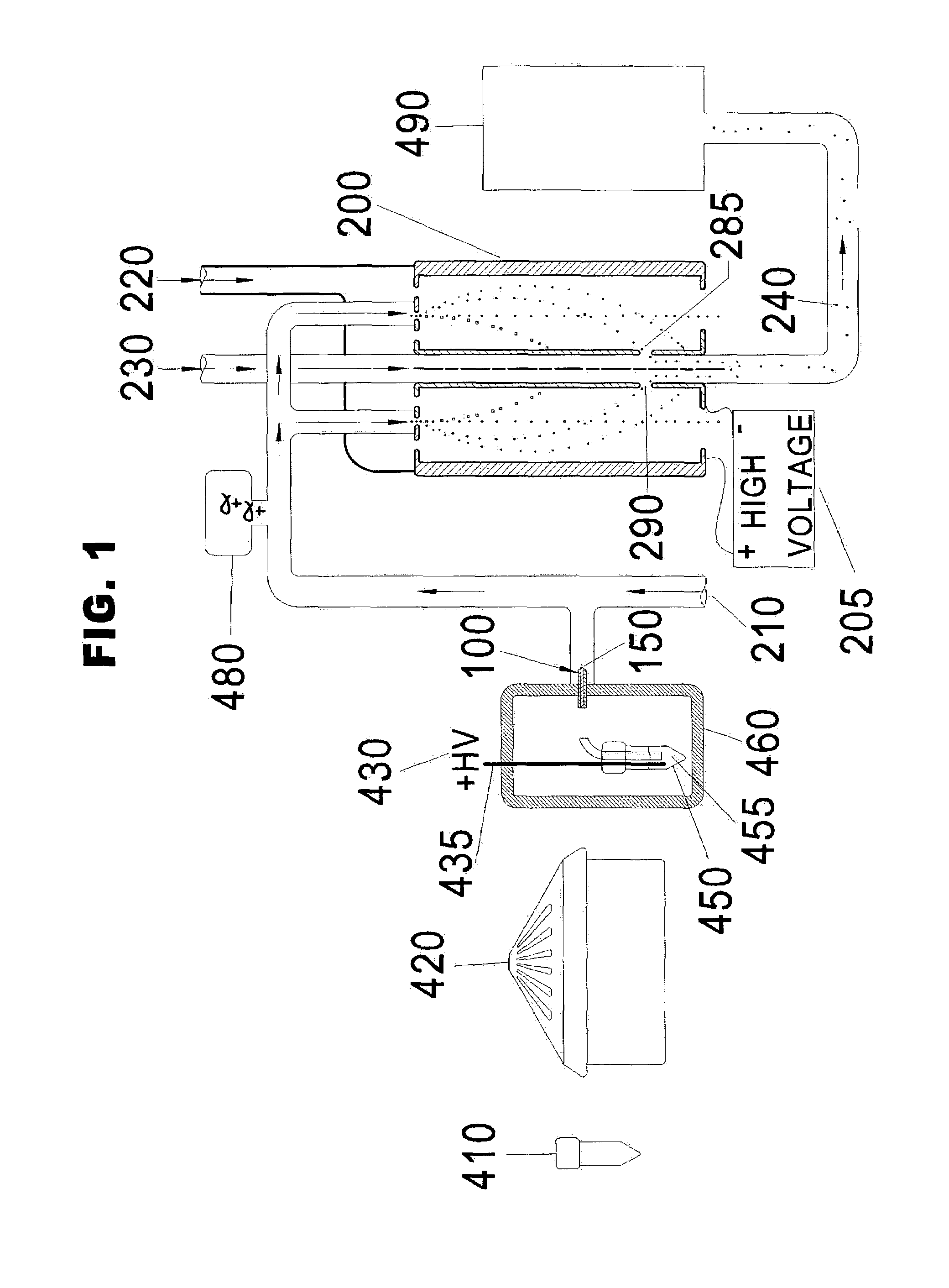Ion mobility analysis of lipoproteins
a technology of lipoproteins and mobility analysis, applied in the field of particle size analysis, can solve the problems of inaccuracy of the friedewald method in specific cases, errors in any of the three steps, and further inaccuracy
- Summary
- Abstract
- Description
- Claims
- Application Information
AI Technical Summary
Benefits of technology
Problems solved by technology
Method used
Image
Examples
Embodiment Construction
A. Definitions
[0043]“Biological particle” means a material having a non-covalently bound assembly of molecules derived from a living source. Examples are lipoprotein particles assembled from apolipoproteins and lipids; viral components assembled from non-covalently bound coat proteins and glycoproteins; immune complexes assembled from antibodies and their cognate antigens, etc., but not entire cells.
[0044]“Physiological sample” means a sample obtained from an organism, such as blood, tissue, pulp, cytoplasm, etc.
[0045]“CHD” means coronary heart disease.
[0046]“VLDL, IDL, LDL, and HDL” are described by class name, acronym, subclass, and density range as shown in FIG. 2.
[0047]“Chylomicrons” means biological particles of size 70-120 nm, with corresponding densities of less than 1.006 g / mL.
[0048]“Differential Mobility Analyzer” means a device for classifying charged particles on the basis of their ion electrical mobility. When the particles have a known uniform charge, the size of the pa...
PUM
| Property | Measurement | Unit |
|---|---|---|
| diameters | aaaaa | aaaaa |
| density | aaaaa | aaaaa |
| density | aaaaa | aaaaa |
Abstract
Description
Claims
Application Information
 Login to View More
Login to View More - R&D
- Intellectual Property
- Life Sciences
- Materials
- Tech Scout
- Unparalleled Data Quality
- Higher Quality Content
- 60% Fewer Hallucinations
Browse by: Latest US Patents, China's latest patents, Technical Efficacy Thesaurus, Application Domain, Technology Topic, Popular Technical Reports.
© 2025 PatSnap. All rights reserved.Legal|Privacy policy|Modern Slavery Act Transparency Statement|Sitemap|About US| Contact US: help@patsnap.com



